BY KEMPINSKI


BY KEMPINSKI



CONTRIBUTORS
Travelling in Style is published by ARTO
7 Avenue Villebois Mareuil
06000 Nice France, in association with the issuer
Kempinski Hotels S.A.
Rue Henriette-et-Jeanne-Rath 10 1204 Geneva, Switzerland
Senior Marketing Manager: Jaclyn Thomas
DESIGN – EDITING
ARTO
Antoine Gauvin
gauvin@arto-network.com
Editor-in-Chief: Elaine Swift
Artistic Director: Aïcha Bouckaert
Publication Manager: Aurélie Garnier
COPYWRITING - CONTRIBUTING
EDITORS
Antoine Gauvin, Elaine Swift, Jaclyn Thomas, Joe Mortimer, Larry Olmsted, Melanie Coleman, Tim Johnson, Tihana Lentini
PHOTOGRAPHY - SOURCES
Cover: Kempinski
Table of contents: Claes Bech-Poulsen, Kempinski
Editorial: Kempinski
Be the first: Kempinski, AdobeStock, Snøhetta, Guggenheim, Alamy, Matej Vidmar, Shutterstock Nymphenburg: Kempinski
Hammams: Kempinski, Claes Bech-Poulsen, iStock
151 countries: Kempinski, Tim Johnson, Adobe Stock
Flavour tourism: Kempinski, Adobe Stock, iStock
Live local: Sandstorm Kenya
Solo travel: Claes Bech-Poulsen, Kempinski, Adobe Stock Moments@Kempinski: @chadwick000000, @alexjsearle, @patty_searle
PRINTED BY FOT, Lyon France
NOMINAL CHARGE 8€ ISSN 2409-2916
Cover image: Orpheus Nymphenburg by designer William Brand. Dark patinated bronze and the finest Nymphenburg porcelain complement each other to create a chandelier full of power and poetry.





















More than a Stay. A Journey of Heart and Place. We are Andronis. A group defined by our people, inspired by our destinations, and dedicated to creating moments that matter. Because at Andronis, it’s not just about where you stay; it’s about how it makes you feel.

For many people, travel is becoming more and more focused on experiences beyond the beach or city break. So, what does travel mean to you? Maybe it’s a once-in-a-lifetime trip to see a sporting event or major exhibition. Perhaps you like to savour the essence of a destination through the authentic flavours of its cuisine. Or is there a particular building or work of art you’ve been longing to see? Whatever your motivation for travelling, you’ll find inspiration in this issue.
For example, our news feature (page 6) is a round-up of the exciting events taking place around the world in the next 12 months. There are many reasons for sports fans to cheer, and for history, art and music lovers, there are spectacular museum openings and a magnificent new opera house to look forward to.
For a truly luxurious experience, Kempinski Royal Residence Nymphenburg, a recent addition to the Kempinski collection, promises a relaxing stay surrounded by tranquillity and history. One of several mansions built for palace courtiers, the residence is right next to the Porzellan Manufaktur Nymphenburg. On page 12, we uncover the story of Nymphenburg porcelain, which is still handmade by artisans today, using traditional techniques.
One of the best ways to get to the heart of a destination is through its cuisine, and that’s what draws many travellers to particular places. On page 48, travel writer and food enthusiast Larry Olmsted serves up his choice of dishes that he believes should be tasted where they were first created. From freshwater crabs in Shanghai to authentic raclette made to a 400-year-old recipe in the Swiss Alps, local ingredients and age-old recipes always bring a strong sense of place and identity.
These days, more and more people are choosing to travel alone – it can certainly bring a tremendous sense of freedom. To make sure your solo adventure leaves you feeling carefree and fulfilled, our travel tips feature on page 66 is devoted to all independent travellers, with ideas and suggestions to make sure you get everything you want from your trip.
Travel writer Tim Johnson is no stranger to travelling solo. So far, he’s visited 151 countries and seven continents, and yet he says there are still destinations to discover. On page 38, he tells us about some of his trips, from nights under canvas to waking up surrounded by luxury in his favourite Kempinski hotels.
In Moments @Kempinski (page 72) three guests share their own experiences of contrasting destinations – Bangkok and Dubai. We’d love you to share your special Kempinski moments too.
We hope that this issue inspires you to explore the world with a fresh outlook!


The biggest archaeological museum ever is making its entrance onto the global stage. Just outside of Cairo and offering stunning views over the Great Pyramids of Giza, Grand Egyptian Museum houses 100,000 artefacts from prehistoric times through to the ancient Greek and Roman eras. This includes jewellery, pots, papyrus, hieroglyphs and even a mummified crocodile. For the first time, King Tutankhamun’s entire treasure collection will be on display with 4,500 possessions from his tomb, along with artefacts from Queen Hetepheres I.

Searching for inspiration for your next getaway? Prepare to expand your horizons with our showcase of exceptional events and inspiring occasions around the globe. Be the first to explore a new museum or opera house, or opt for a more active approach by taking in some of the world’s most exciting sporting spectaculars. And, if festive experiences are your favourite kind of indulgence, head to Europe for an enthralling end-of-year escape.

The Shanghai skyline is making way for a new cultural landmark, with the Shanghai Grand Opera House scheduled to open in late 2025. With striking architecture, panoramic river views, three auditoriums and a captivating line-up of opera and concert performances, this is the latest phase in an ambitious urban masterplan that aims to place the city at the forefront of the globe culturally, economically and scientifically. One of the design’s stand-out elements is the sweeping helical exterior reminiscent of an unfolding fan, while a spiral staircase connects ground and sky, bringing visitors to a glorious gathering spot on the rooftop stage.

It's an ideal time to take a trip to Slovenia as Nova Gorica, and the splendid landscapes around it, will be awash with events to mark its status as one of the 2025 European Capitals of Culture. For the first time in history, the title will be shared transnationally, with Nova Gorica joining Chemnitz in Germany and Gorizia in Italy. More than 400 events are planned, including music exhibitions, dance ensembles, piano performances, film festivals, peace walks and food and wine celebrations. The aim is to use the title to transcend borders, celebrate unity and showcase the combined heritage of all three cities.

The spotlight will be on the glistening white slopes of Italy for the Olympic Winter Games in February 2026 and the Paralympic Winter Games in March 2026. Covering snowy expanses including Bormio and Cortina, as well as chic regions and cities like Veneto and Milano, this event will see around 2,900 athletes competing for 195 medals in more than 100 events. This Milano Cortina Games is set to be even more awe-inspiring thanks to the debut of ski mountaineering, which joins bobsleigh, curling, figure skating, ice hockey, biathlon, snowboarding, ski jumping and many more sports.

Asia’s biggest motorsport event is taking place at the Marina Bay Street Circuit with views of the city’s glittering night sky, from 3 to 5 October 2025. The Singapore Grand Prix sees the world’s finest drivers compete at speeds of up to 325 km/h (202 mp/h). This weekend is a highlight in the social calendar with an exhilarating atmosphere around the starting grid, pit lane, finish line and podium. Off track there’s incredible hospitality, including delicious cuisine, spectacular fireworks and live entertainment planned from Elton John.
Cementing Abu Dhabi’s reputation as a thriving cultural magnet, there are not one but two museum openings on the horizon. The Guggenheim is a sprawling cluster of angular structures with gravity-defying shapes stacked atop. Inside, you’ll find an expanse of galleries, exhibition spaces and a theatre. It will become the largest museum in the Guggenheim family, which encompasses New York, Venice and Bilbao. Also opening soon is Zayed National Museum. The rich history, culture, values and stories of the UAE unfold in a dramatic building designed to evoke a falcon’s wings. There’s even a full-size reconstruction of a Bronze Age boat, making for an illuminating visit.


The FIFA World Cup, taking place across three countries, will be the biggest in the tournament's history – and mesmerising Mexico is set to be one of the host nations. All eyes will be on Estadio Azteca Mexico City in June 2026 as it opens the event. Following this, there will be 104 games across 16 host cities in Mexico, Canada and the US. A Mexican multi-stop trip could be the order of the day, encompassing Guadalajara Stadium and Monterrey Stadium to the north, ending with a retreat in Cancún.

Europe’s Christmas markets are a delight every year – and the perfect reason for a winter getaway. From ornately decorated wooden chalets and the aroma of glühwein to handcrafted gifts, the cosy ambience and fairytale escapism is enchanting. Among Europe’s finest markets are Budapest for hearty Hungarian fare, St Moritz for a romantic backdrop, Munich for resplendent architecture, Riga for an intimate atmosphere and Berlin for more than 100 individual markets. Wherever you choose, you’ll be bewitched.




In the hushed workshops and silent studios of Porzellan Manufaktur Nymphenburg, the timehonoured art of Bavarian porcelain-making has remained unchanged for almost 280 years. Carefully hand-made by artisans using proprietary colours and patterns, Nymphenburg ceramics are today regarded as some of the finest in the world.
Joe Mortimer delves into the history of a brand synonymous with quality, luxury and craftsmanship, and peeks behind the curtain of Kempinski Royal Residence Nymphenburg, which recently joined the Kempinski collection.





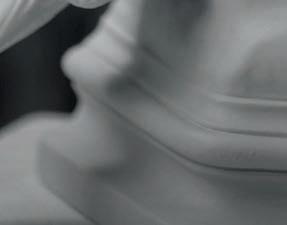










BY JOE MORTIMER *
Pink-plumed parrots stand sentinel in the gardens of Munich’s Porzellan Manufaktur Nymphenburg, where the Latin term ‘manu-factum’ – made by hand – is upheld with an almost religious devotion. Masters of the art of fine porcelain production since the company was founded in 1747, Nymphenburg artisans still produce every beautifully crafted piece using age-old techniques.
Established by Maximilian III, Elector of Bavaria, during a period when Europe was in the thrall of porzellankrankheit, or porcelain madness, Nymphenburg became a hallmark of quality prized among members of the aristocracy; its fine ceramics considered as both a status symbol and a mark of high taste. Nymphenburg tableware and decorative pieces would be found in palaces and royal courts across the Holy Roman Empire, bringing precision craftsmanship, elegant design and a touch of whimsy to regal dining rooms.
Since 1761, Porzellan Manufaktur Nymphenburg has been headquartered in a beautiful Cavalier House – one of several mansions built for palace courtiers in the 18th century – opposite Schloss Nymphenburg, the Palace of the Nymphs: a Baroque masterpiece and former summer residence of the House of Wittelsbach, which ruled over Bavaria until 1918.
Behind the pastel façade is a warren of workshops where craftsmen use custom-built tools to carve intricate patterns and artists decorate ornate pieces by hand. Work is permeated by a silence born from intense focus and the absence of noisy machinery; a reverend hush punctuated by the creak of centuries-old floorboards and the factory’s ancient mill. As in days gone by, belt-driven potters’ wheels, grinding drums and mixing vats are powered by water from the palace canals, making Nymphenburg one of the most energy efficient factories in the world.
There’s an unspoken understanding here that work of this calibre cannot be rushed. Porcelain paste is ground and mixed at the factory and allowed to mature for at least two years before it is used. Pigments too are selected and blended in-house – sometimes with herbs and scented oils that perfume the workshop – from a proprietary collection of more than 15,000 shades, and a template of every Nymphenburg object ever made is kept in the archive for posterity and future use.
The company’s current collection reflects its ability to constantly evolve without compromising on its founding ethos. Elaborate tableware and service sets based on traditional Bavarian and Rococo patterns are still produced alongside more contemporary collections. Decorative items like wall tiles, lamps and washbasins put Nymphenburg at the crossroads of form and function, while collaborations with brands including Austrian distillery Reisetbauer and fashion icons like Karl Lagerfeld and Vivienne Westwood reflect the company’s pioneering and sometimes playful spirit.
A menagerie of birds and animals including the iconic rhinoceros Clara – modelled on a real rhinoceros that was brought to Europe from India in the 18th century to the delight of awestruck crowds – and those pink majolica parrots play a starring role in the collection, as does a troupe of decorative figurines depicting characters from Commedia dell’Arte – the Italian theatre popular in Europe throughout the 1700s.
Nowhere does the artistry and elegance of Nymphenburg shine brighter than at Kempinski Royal Residence Nymphenburg. Situated in another Baroque Cavalier House a few hundred metres from the factory, this exquisite villa is a living museum where guests are immersed in Nymphenburg craftsmanship.
In every room, an ensemble of works is displayed in a cabinet of curiosities, while functional items like tea sets, vases, ceiling lights and a butler-summoning tortoise are as elegant as they are useful. Hand-painted fish swim across the wall tiles in one of the seven bathrooms, while another showcases a spectacular lithophane artwork made from wafer-thin translucent porcelain panels. The technique finds its apogee in the sauna where, at the touch of a light switch, four plain white panels are transformed into vividly rendered landscapes in purest bisque porcelain.
The original porcelain masters of Bavaria were known as ‘arcanists’, meaning those in possession of secret knowledge. The term evolved to describe those versed in the arcane arts of magic and alchemy. From these ethereal lithophane panels to the impossibly intricate figurines and the age-old techniques used within the Porzellan Manufaktur Nymphenburg, there’s more than a little magic on display in this rare and exquisite corner of Bavaria.





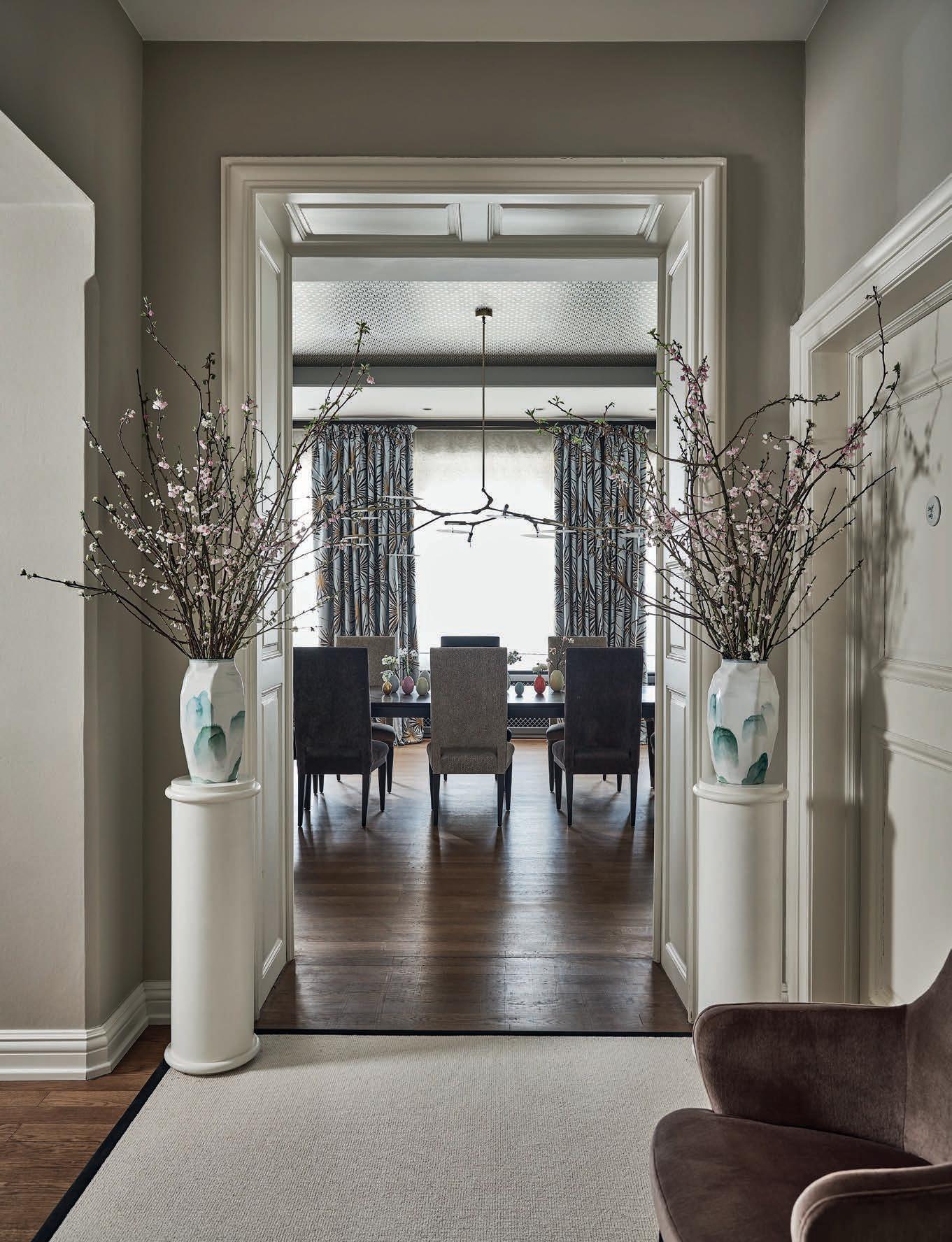















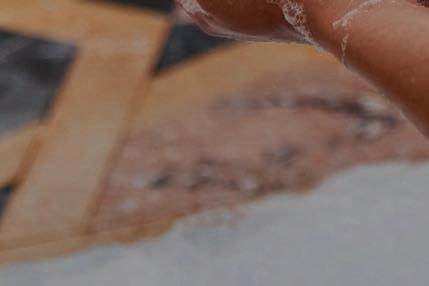


There’s nothing quite like a hammam session for providing a wonderful sense of wellness. It’s a moment just for you, when you can recharge your batteries, relax your body and calm your mind. Hammams have existed for thousands of years but their heyday was during the Ottoman Empire. There are still many intricately designed examples to be found in Istanbul and some of the most striking have been magnificently restored, bringing a unique experience redolent of an opulent past.




BY ANTOINE GAUVIN
Tucked away in the famous Topkapı Palace in Istanbul you’ll find the Valide Sultan Hammam which was built for the mother of Sultan Murad III in the late 16th century. Walking in the footsteps of the royal family is a strange feeling – it’s almost as if you were intruding on their privacy. Recently restored to its former glory in white marble with highlights of gold, it is now a fascinating museum. To reach this architectural marvel you’ll need to take a long walk through the narrow corridors and small domed rooms of the royal harem. Once in the hammam, you are at the heart of the ancient tradition of the Turkish bath – a central feature of the Ottoman Empire’s sophisticated way of living.
INSPIRED BY THE ROMANS
And yet the origins of the hammam are even earlier, since it was in the 1st century BC when the Roman emperors adopted and developed a Greek custom, building large bath complexes in Rome and its provinces which were open to all and free of charge. By the end of that century, Rome had around 200 ‘balneae’. These public baths, some of which were huge, featured sophisticated underfloor heating systems. They were also social hubs where men could meet, talk about sport or current affairs, and even enjoy a meal. With the spread of Islam in the 7th century, the Arabs adopted the Roman bath concept and made it part of their religious practice. Used for ritual ablutions, hammams became key features of Arab and Muslim cities.
As more and more hammams were created, their design changed, breaking free of the Roman thermae style. For example, they no longer had swimming pools, libraries or gymnasiums. Because of the ritual importance of ablutions, clear water flowed everywhere, marking real progress since the water in Roman baths was often stagnant. A Turkish bath generally consisted of three main rooms: a cool room for resting, a warm room for relaxing, and a hot steam room.
Until the 15th century, under the Umayyad and Abbasid caliphates, hammams sprang up throughout the Islamic world. But the custom did not cross over into Christian Europe, where it was considered immodest. The hammam’s golden age was during the Ottoman Empire, from the 15th century, when they reached their peak of design and refinement. Many were decorated with mosaics, intricately patterned domes, and carved fountains. Mimar Sinan
and his fellow architects designed sumptuous hammams such as the Topkapı Palace example, and the Hürrem Sultan Hammam, also located in Istanbul, between the Blue Mosque and Hagia Sophia.
WELLNESS AND SOCIAL SPACES
Like the Roman baths before them, hammams were also places to meet and talk. At first they were for men only but in the 12th century, the great Arab physician Avicenna declared that a hammam bath was good for everyone’s health and fitness. And so they were opened to women, quickly becoming an essential part of their lives.
Women went to the hammam for wellness and beauty as well as to relax, rejuvenate and to meet with friends. It became a place where women could talk, as well as seek and give advice. Young women would show off their embroidered towels; older women might look out for potential wives for their sons. There was a system of codes for women to signal their status – single, married, divorced or widowed – by the colour of their towel. These days men and women still use the hammam separately, but it has lost the social aspect, with the focus shifting to personal wellness. Urban life is stressful, but many people have rediscovered the hammam as a relaxing interlude in a busy day. As a result, they are once again booming.
Steeped in history, the Hürrem Sultan Hammam reopened a few years ago, following a careful renovation. In this magical place, it’s easy to imagine yourself back in the days of the Sultans as you bask in its sensuous pleasure. Beneath its magnificent dome, visitors are pampered, gently scrubbed and massaged. Before the massage begins, the hammam master waves a cotton bag coated in black soap in the air, producing a cloud of foam which feels like thousands of tiny soft feathers as it settles on your skin. The experience concludes with a serving of tea and fresh fruit.
Today, beyond Istanbul, many hammams have evolved to become smaller steam rooms in hotel spas, but it remains an experience that reminds us of the remarkable benefits of an ancient custom which has been rediscovered and adapted for 21st century life.



















Where do you go when you’ve (almost) seen it all? As a travel writer, Tim Johnson always has an eye on his next destination, juggling back-to-back flight scheduling, constant time zone shifts and multiple story deadlines. We asked Tim what makes a luxury hotel stand out from the crowd for an eternal globetrotter, and which destinations are still on his personal travel bucket list.









BY TIM JOHNSON*
It’s a common sensation, always in those quasi-mystical moments that pass quickly between the joy of a satisfied sleep and jarring wakefulness. I’m in a hotel bed, somewhere in the world. My eyes flutter open. Morning light is leaking through the window shades. And, just for a second, the question pierces through the delicate gossamer that separates the dream world from the real one. That is: where am I?
I’m a travel journalist who writes for some of the world’s biggest publications. I have visited 151 countries and all seven continents and spent many, many nights in hotels. Travel has always been a passion for me, from family road trips as a kid across North America, to the Grand Canyon and the Canadian Rockies and the beaches of Prince Edward Island. As a young adult, I graduated to backpacking, spending my nights in youth hostels. Getting the chance to write about my journeys for a living for the last couple of decades has been a dream come true.
Since becoming a travel writer, I’ve slept in many different places, always in pursuit of a good story. Super-basic tented safari camps with bucket showers, tracking lions on foot in Botswana, or elephants in Zimbabwe. Rolling in the bunks of repurposed research vessels, rocking across the Drake Passage, infamously and gloriously one of the world’s roughest expanses of water, en route to Antarctica. Curling up in a traditional nomadic tent while searching for dinosaur bones in the vast expanses of Mongolia’s Gobi Desert.
Plus, more five-star hotels than I can count. From the high thread counts in the sheets to sliding into the depths of the deep-soaker tubs, it’s all pure pleasure.
But many of them, while cushy, could be anywhere. There’s no sense of place. None. So those seconds between sleep and wakefulness, they stretch out. As I’ve circled the globe, I have learned the true joy of waking up in a room that’s truly distinctive. In a hotel that, in addition to all those sumptuous upscale amenities, also brings the beauty, history and culture of its surroundings right inside.
I certainly felt that sense of place at Çırağan Palace Kempinski Istanbul, where I slept like a sultan. During the day, I wandered the hundreds of tiny shops in the Spice Bazaar, a sensory overload in all the best ways. In the evening, I returned to a hotel that was
once an Ottoman palace, renovated – and reinvented – to reflect those days of wealth and power. I dined on dishes with the sultan’s signature at the Michelin-recognised Tuğra then bedded down in a suite overlooking the Bosphorus. Then, leaving the curtains open, I watched the lights of cargo ships and party boats alike, making their way up and down this great strait, between two continents.
That distinctive and unmistakable spirit of the past also lingers at Hotel Taschenbergpalais Kempinski Dresden, perhaps more than any other property I’ve encountered. This recently reopened hotel is the embodiment of one man, and one woman. August the Strong, the most legendary of Saxon kings who, the story goes, could snap iron horseshoes with his bare hands, and Anna Constantia, his favourite mistress, the first to live in this palace after August had it built in 1705.
The design reflects the Zwinger and Residenzschloss and other surrounding architectural treasures in Dresden’s Jewel Box. Plus, the big bends of the Elbe, echoed up high, in a lobby chandelier. And this is a place that tells a story, too. One of power, and of love. I bumped into the Countess of Cosel everywhere, including in four monumental portraits – such as one touched up (intentionally) by a graffiti artist, near the lobby. No common hotel, indeed.
Here’s the thing about the world: we all know it’s small, right? But it is also really, really big. With people and places and experiences just waiting for you, ones you couldn’t even imagine. So, while after more than 20 years of being a travel writer, my pace may be slowing just a little, there remain horizons I desire to reach, across the globe. I’ve been to the high Arctic in Canada and Greenland and Norway and Sweden many times, but never reached the actual North Pole. Spectacular diving in Papua New Guinea also continues to elude me.
And two more destinations spring to mind – the cerulean skies and ancient history in Oman, and the sultry beaches and ultramarine Indian Ocean waters of the Seychelles. They’re on my list, too.
Fortunately, each of these two destinations features a Kempinski hotel, so I know that on my future visits, I won’t just sleep well in five-star luxury because, in addition to that, a very special stay will await. Every morning. When my eyes flutter open, I will roll out of bed, in a unique room, with a big day of experiences just ahead.








What you eat, and where you eat it, can reveal the true character of your destination. Prioritise local flavours and history will reveal itself with every bite, promising authentic experiences and a true sense of place. We asked travel writer and food enthusiast Larry Olmsted to inspire your next journey with his pick of dishes that should be tasted at the source.

BY LARRY OLMSTED*
The explosion of Mount Vesuvius was devastating, but the rich volcanic soil left behind now produces the world’s finest tomatoes, Italy’s prized San Marzanos. The most coveted beef calls Japan’s Kobe home, Madagascar is famed for its vanilla beans, and chefs worldwide seek out Maine lobsters. But while terroir-based ingredients can be exported, it’s trickier with recipes for regional specialities, reliant on traditional ingredients and preparations, often left behind when national cuisines go worldwide. Despite globalisation, there are still many dishes done best in the places where they were invented.
There are many hyper-local dishes worth seeking out when you travel, and gourmet visitors to Shanghai in the autumn always make a beeline for restaurants serving the legendary local freshwater crustacean, Hairy Crab, or Chinese Mitten Crab. These aromatic seasonal crabs are best between September and December, have a strong umami flavour with a slightly salty brininess, and buttery meat with a fluffier mouthfeel than most crabs, filling restaurants with fragrance during cooking. They are so prized they often come to the table accompanied by serial number tags proving their provenance, and while there are creative presentations, the classic preparation is to steam the crabs whole, then dip the meat in black vinegar with ginger.
In the Swiss Alps, many traditional dishes involve melted cheese, but the humblest and most satisfying is raclette. Unlike its siblings, it requires no special pot, cooker or added liquids, just a heat source (originally a shepherd’s campfire, as the dish dates back at least 400 years). Raclette, from the French racler, 'to scrape', is also the name of its key ingredient, a semi-hard Alpine cheese made from raw cow’s milk in a border region of France and Switzerland, with protected designation of origin (PDO) status in both. A cut wheel is exposed to fire or, in restaurants, a heat lamp, until the surface liquifies. This is scraped with special wooden paddles and spread on an array of potatoes, pickled vegetables and cured meats. It’s a social experience, and the selection of foods makes for a varied and richly delicious meal.
Thailand is a radically diverse country stretching from the Himalayas to sub-tropical islands, with plains, forests, and river basins, and its cuisines are equally diverse. But one constant almost anywhere you go is tom yum (or yam), a soup so central to Thai identity that in 2021, the government applied to have it recognised by the United Nations as part of its cultural heritage. It’s a dish where every household has its own recipe, and there is no one style, with both creamy (tom yam nam khon) and clear (tom yam
nam sai) varieties, using broth or coconut milk, but the common thread is a strong hot and sour contrast. Deep flavour and spice come from shrimp shells and long-simmered, pounded fragrant ingredients including lemongrass, kaffir lime leaves, chilis, and ginger. Tom yum is typically topped with chopped fresh coriander and served with white rice, and you can keep trying it as you travel, with greatly differing experiences.
Another diverse and varied local favourite is shawarma, a Middle Eastern signature dish dating to the Ottoman Empire. Both a sitdown meal and beloved street food, it is the method of cooking, not the protein, that makes this dish. Sliced raw meat flavoured with Middle Eastern spices such as cumin, cardamom and paprika is stacked and formed into a large, inverted cone that is slow roasted on a vertical spit (the name derives from Ottoman Turkish for 'revolve' or 'rotisserie'), constantly sliced from the outer edge as it cooks, creating a mix of crispy and succulent meat. It originated in Türkiye with lamb but can be beef or poultry, and was even exported to Mexico by Lebanese immigrants, becoming tacos al pastor. Shawarma is served as a sandwich on pittas or thinner flatbreads, usually with tahini or toum, an Arabic garlic sauce. In the Middle East it is more meat-centric, with simple chopped onions, parsley and sometimes turnips, while Türkiye, where it has become doner kebab, adds lettuce and tomatoes.
Over in Germany, it's said that there are some 1,500 kinds of sausages, or wursts, but one of the most important – and least understood – is Weisswurst, a Bavarian speciality found around Munich. Named for its white colour, it is made from veal, with added pork fat, chopped onions, parsley and a light touch of spices, including mace, nutmeg and cardamom. For Oktoberfest visitors, it is a staple of morning-after recovery from overindulgence, as Weisswurst's most unique attribute is its popularity as a breakfast meat. Just as Italians raise an eyebrow at foreigners ordering cappuccino after 11:00, Weisswurst is traditionally enjoyed before noon, as it is neither smoked nor preserved and has a short shelf life. Sausages are simmered – never boiled, as they would split –and often come in a bowl of water to keep them warm, although it is not soup. You peel the casing off and eat only the insides, like a banana, accompanied by pretzel and mustard, and it is considered bad luck to eat an even number of links.
These dishes are all very different, but what they have in common is that they were created to make use of the best local ingredients, and that is what still makes them so special centuries later.







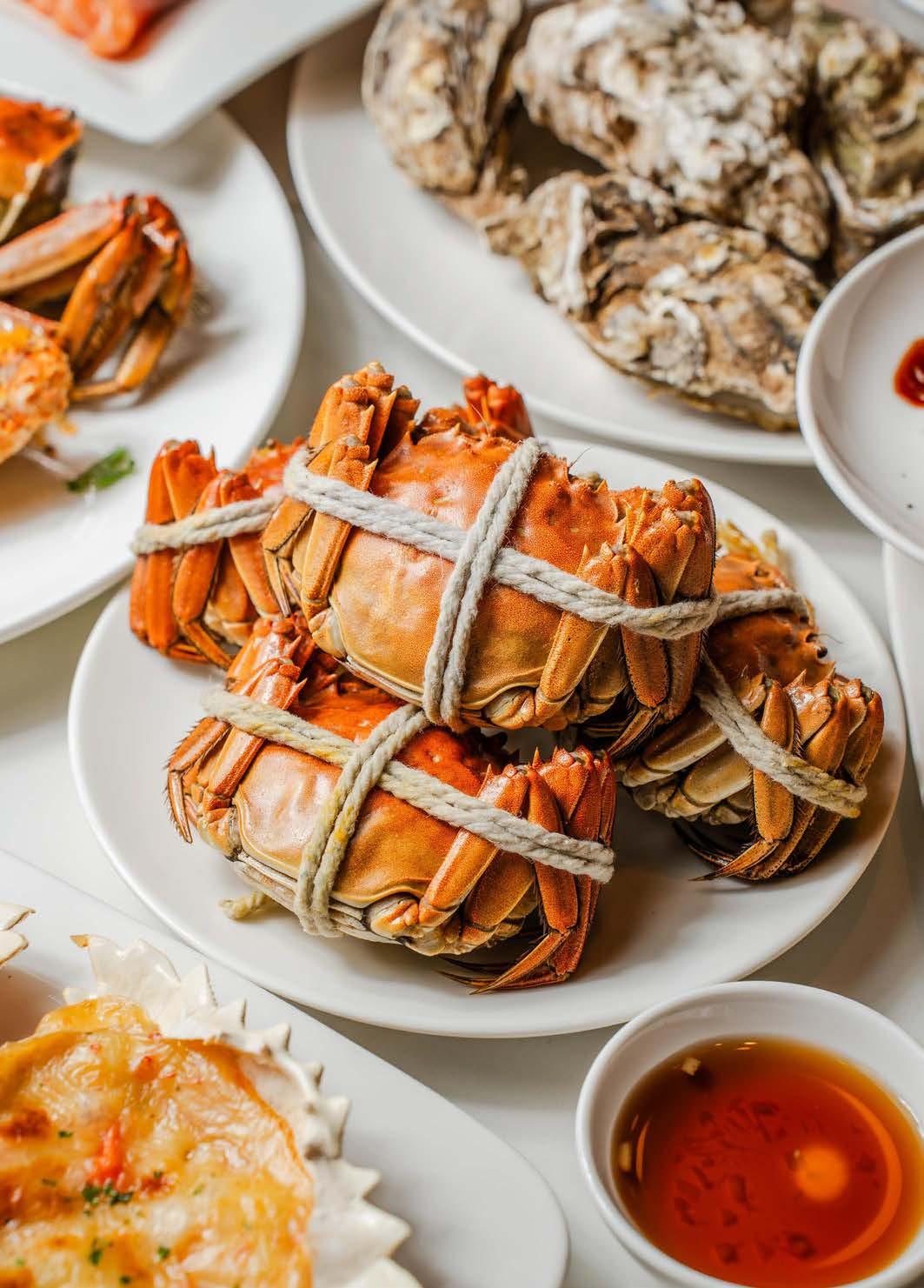


06 | REWARDING LOYALTY




There is something supremely rewarding about venturing out to discover the hidden depths of a destination, immersing yourself in its culture and gaining a more nuanced understanding of its people. With this exclusive KEMPINSKI DISCOVERY experience in breathtaking Kenya, you can spend an absorbing afternoon at a leather factory –surrounding yourself with the beauty of artisan products and passionate craftspeople.
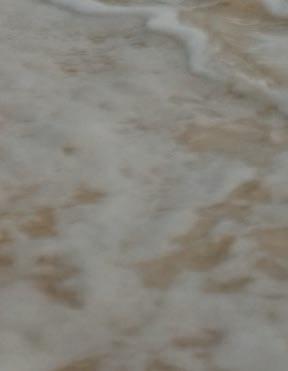


Travel is evolving, and guests are increasingly keen to go beyond carefully curated pictures to gain a true flavour and authentic understanding of their chosen destination.
Sandstorm Kenya offers just this type of unique experience, with a rare glimpse into life and locals in a leather factory producing luxury goods. An immersive tour at Opportunity Factory, which is also an art hub housing ceramics, stained glass and screen printing studios, allows you access that is often beyond the reach of visitors. Here you’re presented with an exceptional opportunity to get under the surface of what makes this nation and its people tick.
Sandstorm’s fascinating story began two decades ago when it was making safari tents, an essential commodity in Africa where visitors have flocked for many years to see its staggering array of wildlife. Eager for sustainability from the start, and thinking creatively about how to use excess materials, they stumbled upon the idea of using this excess canvas to make bags. And these bags quickly became the nucleus of the business.
Based in Nairobi, and within easy reach of Villa Rosa Kempinski Nairobi, here you can glimpse every step of the fascinating journey to produce bags and accessories. From touching the raw materials in the tannery, to selecting patterns and embossing leather, every element is covered, from concept to creation.
The polar opposite of mass production, individual craftspeople painstakingly cut, stitch and assemble each bag, one by one, from start to finish, perfecting every detail. In fact, Sandstorm are so keen to celebrate the individual people who are the backbone of the business, that the name of the sewer is emblazoned on the inside. This mark of pride is a powerful and tangible reminder that it’s people, not machines, who make these products. And of course, it imbues the bags with a character that you just don’t find in our fast-fashion throw-away society.
Strolling around, visitors can’t help but be struck by the ingenuity and strength of the Kenyan people. Indeed, Sandstorm’s mantra is “Kenya isn’t just where we are, Kenya makes us who we are.” The people here come from diverse backgrounds across the country, but this is far more than a job. It’s an art form and a stable livelihood
to support their families. They are rewarded with fair wages, safe conditions, growth opportunities and financial independence.
EMBRACING THE RICH HERITAGE
Empowering the artisans, especially women, is key to Sandstorm, as is preserving Kenyan culture. And they do this through upskilling craftspeople in beading, weaving and crocheting. Training locals in these arts helps protect, uphold and safeguard Kenya’s rich heritage by passing down valuable techniques to future generations. And putting these traditional elements at the core of the designs means these crafts will endure.
As you might expect from an organisation that truly cares about Kenyans and Kenya, the materials really matter too. The leather is locally sourced and ethically tanned. The offcuts are given a new lease of life when they’re repurposed into stunning bracelets and accessories – showcasing the potential of what might be discarded by other manufacturers. Produced in small batches, waste is low and mindful consumption is high on the agenda. Crucially, it’s not just the materials that are durable, the timeless designs are too.
CONNECTING WITH LOCALS
So why is it important for Sandstorm to be seen? It’s about connection. With so much attention on the wildlife prowling the wilderness in Kenya, it’s refreshing to shift the focus to the people. So many of our experiences as we travel are about fostering connections and this is a rare opportunity to do just this – to meet, to unite and to celebrate the warm-hearted locals and their heritage.
And what better way to remember your visit than by taking a Sandstorm bag home, either from the factory itself or from the boutique at Villa Rosa Kempinski Nairobi, as a treasured reminder.









Whether it’s a sublimely relaxing escape with a focus on rejuvenation, or a high-octave adventure off the beaten track, travelling alone can be a uniquely rewarding and liberating experience. Soak up the destination of your dreams through a clearer lens, free from distraction, guided only by your own whims and passions. From the inspiration and the itinerary, to essentials to pack and people to help, here we’ll guide you with tips and tricks to elevate your trip and give you a new perspective on the world.

It’s not often in life that we’re granted the freedom to make it all about ourselves. So grasp this exceptional opportunity with both hands and tailor a trip completely to yourself –whether you’re happiest delving into museums and cafés on a city break, or seeking a pursuit that is altogether more exhilarating and empowering. When you’re looking for ideas and inspiration, think about what you want to get out of the trip and allow this vision to shape the destination. You may want to centre your retreat around a particular interest, event, festival or exhibition for that extra atmosphere or camaraderie. And, if this is your first foray into independent travel, you could start on a smaller scale with a weekend break before working up to a more ambitious adventure. One of the benefits of solo travel is undoubtedly having free rein and fluidity over every element, including following your own agenda and schedule. Yet for extra peace of mind, it may be a good idea to have parts of your itinerary booked, such as airport lounges, transfers and hotels. It’s also helpful to have an outline for each day to avoid feeling adrift. Think about what makes your heart content, from a long lie-in and slow breakfast, to shopping, sightseeing or golfing. Remember to set aside time for unadulterated unwinding, such as gym sessions, sunny afternoons by the pool, or revitalising spa treatments. With the priority being a sense of wellness, allow yourself to be self-indulgent.

When travelling alone, give extra consideration to packing, so you have everything you need to feel relaxed and carefree. You may want to include a spare phone charger, battery pack, medical kit, phrase book, portable door lock and selfie stick or tripod so you can capture meaningful pictures. Packing conservatively makes it easier to carry luggage, but do include a comfortable pair of shoes or trainers as it’s helpful to familiarise yourself with the area around your hotel on a daylight walk. Printed copies of your passport, insurance, flight details and boarding passes are also important. Store these in the safe in your hotel room and email them to yourself so you can log into your account and access them if your phone is misplaced. Save phone numbers for your hotel, bank or credit card company and local emergency contacts in your phone ahead of time and you may also want to download Google Translate on your devices. Some guests like to contact their hotel ahead of arrival to let them know they’re solo travellers, helping them to feel at ease and get the trip off to the perfect start.
It’s worth thinking about – and letting your loved ones know – how and when you intend to make contact so you strike the balance between staying connected and having the peace and solitude, with respite from endless emails and messages. You may want to share your itinerary using apps such as TripIt and Wanderlog where you can upload details about flights, hotels and excursions. You could give friends and family glimpses of your travels on social media or set up a specific messaging group so everyone gets an insight without being bombarded with tales of your voyage of discovery on your return. This can also serve as a record of your escapades, so you can reminisce when you’re back to reality.
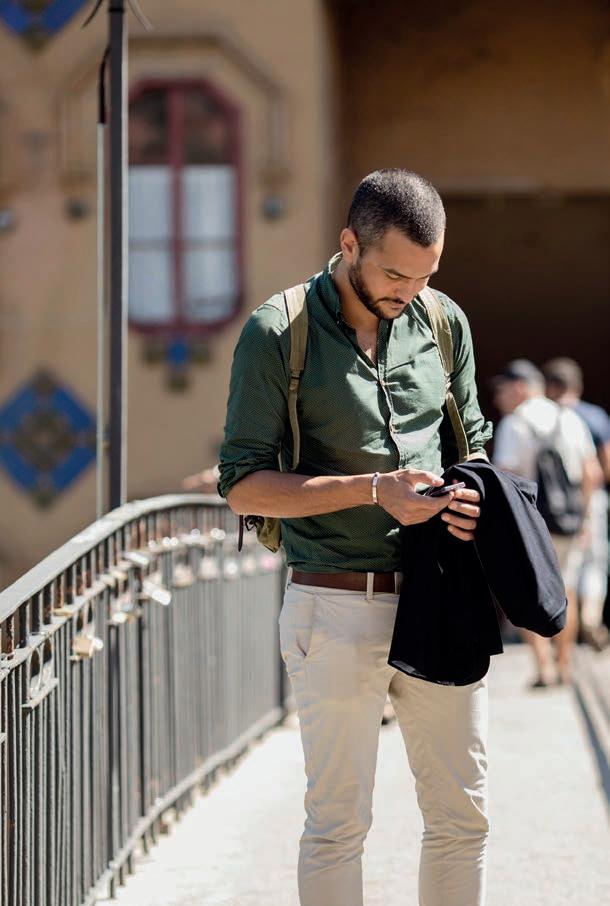
For some solo travellers, the prospect of eating alone can feel daunting, but you could try re-positioning it as an opportunity to eat your favourite cuisines without having to consult anyone else! Plan ahead by researching and making reservations at local restaurants that appeal to you and your palate. And, if feeling conscious, bring a book or iPad and headphones for entertainment during mealtimes. Think about more informal settings for food and drinks, such as dining in the hotel lobby or bar, grazing at food markets, or opting for restaurants with more communal and inclusive canteen-style tables. You will always find sommeliers and waiting staff who are delighted to share their insights about the area and attractions. Of course, after a long day exploring, you may prefer to indulge in room service and bask in your own company in the most elegant surroundings.


If you’re hankering after a solo trip but don’t know where to start, allow us to step in and offer our boundless knowledge and insight. Kempinski concierges are experts in their respective destinations and cultures. From ordering taxis to assisting with language, and from co-ordinating excursions to arranging private drivers and guides, they are here to help. They’ll endeavour to find pursuits and places shaped around you and your interests and, with their local wisdom, they can guide you to the most breathtaking beaches or divine restaurants. So, allow yourself to sit back while someone else does the work for you. Whichever way you choose to while away your days and nights, on returning to the hotel, you’ll feel like you’re entering your own private sanctuary with a team on-hand to make your break effortlessly easy – so you can focus on indulging your passions, stimulating your senses and discovering both the destination and yourself.
While travelling on your own terms is heavenly, and there are infinite advantages in terms of independence and spontaneity, there may be times when you want to share the experience with others. Companionship and connections are all part of the adventure. The concierge at your hotel will be able to recommend activities such as cooking courses, dance classes or wine tasting, so you can hone a skill while enjoying the sociable benefits. You could join a walking excursion, museum tour, boat trip or yoga session, or take on a new challenge. Whether that’s surfing, snowboarding or dune bashing, you may find yourself chatting about your shared experience with fellow participants afterwards, over a coffee or drink. Remember, when you venture out on your own, conversations are often sparked more naturally than you might imagine, whether that’s asking a local for recommendations or a fellow traveller for their highlights. And all of these encounters can offer new angles on your destination, making your adventure even more enriching and fulfilling.



A tranquil getaway to Sindhorn Kempinski Hotel Bangkok surrounded by welcoming Thai culture and cuisine.
An inspiring adventure between tradition and innovation at Kempinski The Boulevard Dubai. Two of our guests share their special moments – we hope their experiences inspire you to explore our world. And don’t forget to share your own @kempinski moments with us on social media!



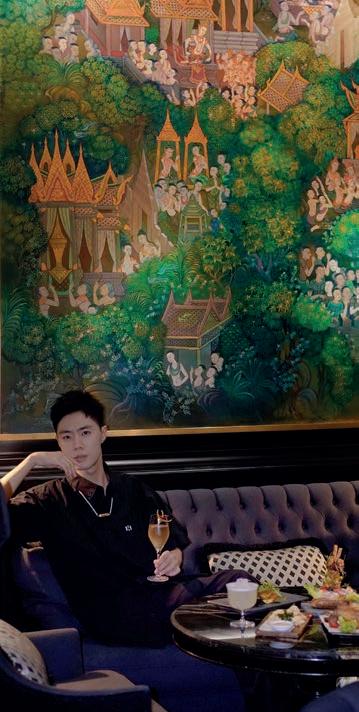


I've been to Bangkok over a dozen times, but this trip was special because I stayed at this beautiful hotel with my brother, who has a passion for photography. My favourite spot was the pool, especially for the stunning city views, closely followed by the Firefly Bar for its creative cocktails and cosy ambience. When it comes to food, Pad Thai was my favourite dish, and it’s really unmissable if you’re visiting Thailand. For my next Kempinski moment, I’m heading to Istanbul and I can’t wait to discover the city.
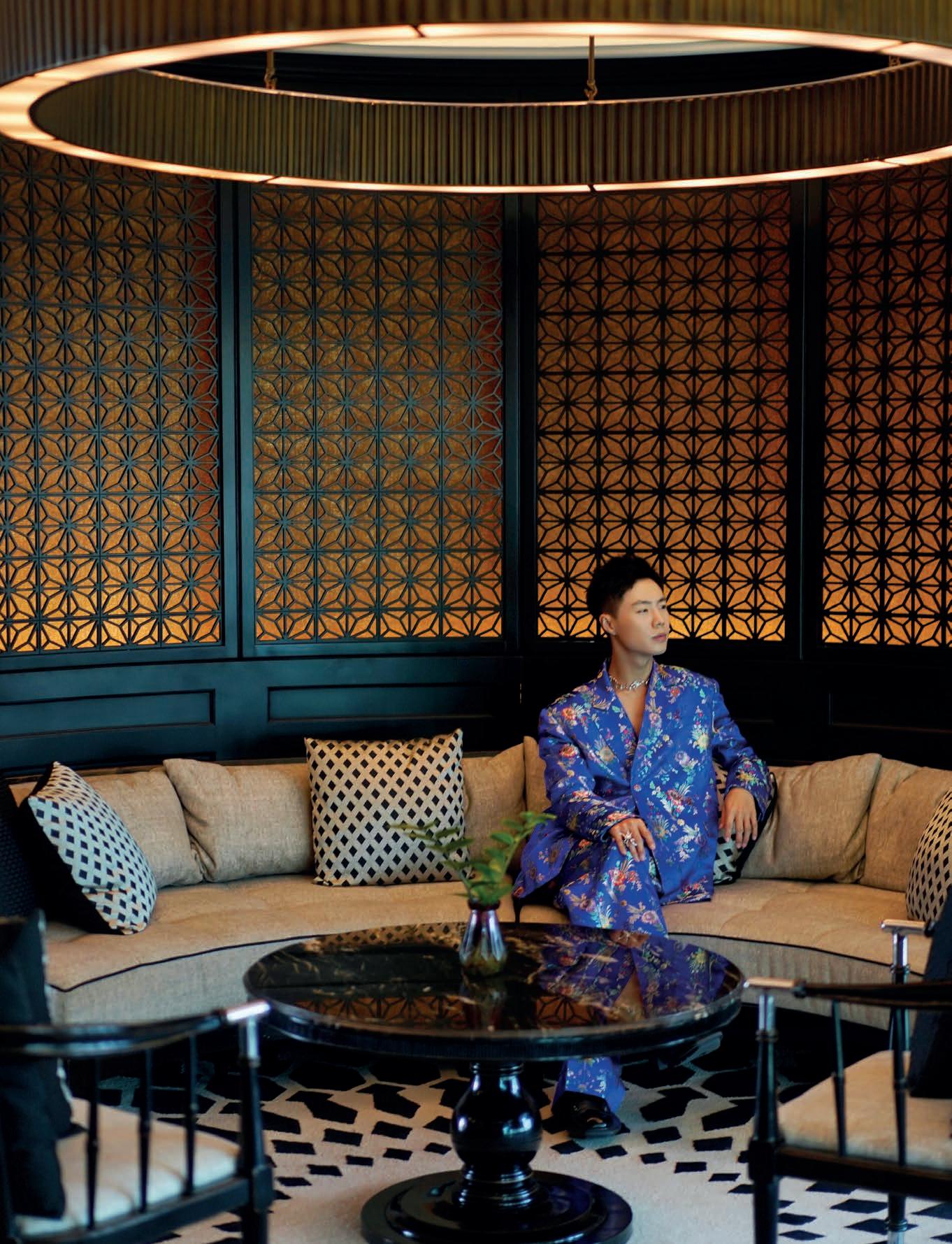
“The thing that left a lasting impression on me was the bar. The cocktails are masterfully crafted, and the food is absolutely exquisite.”

“Dubai's ability to innovate while keeping its cultural roots intact, especially through beautiful attractions like the traditional souks, is pretty amazing.”






We’ve visited Dubai several times because Patty used to live there. One of my favourite memories from this trip was the desert safari because it truly captured the essence of an Arabian adventure. After that excitement, dining at La Brasserie Sur Le Boulevard was the perfect way to unwind, especially with their grilled Wagyu ribeye, but the service was what really made the stay special. For our next Kempinski moment, we love a blend of modernity and tradition, so we’re eager to explore Jordan.
